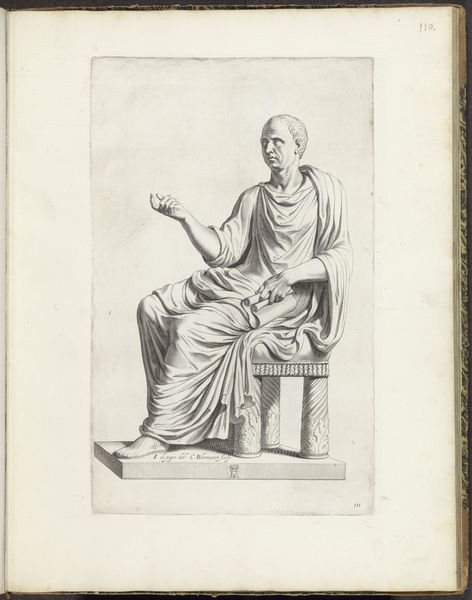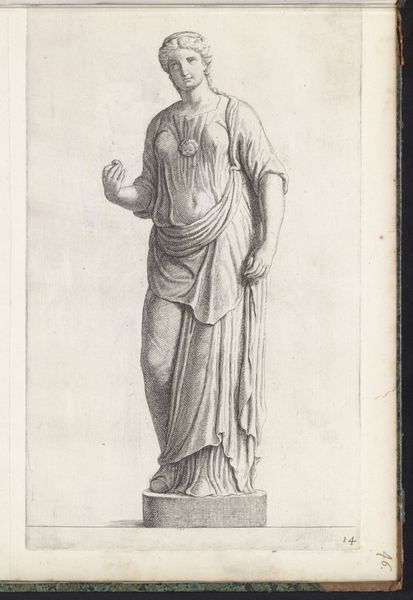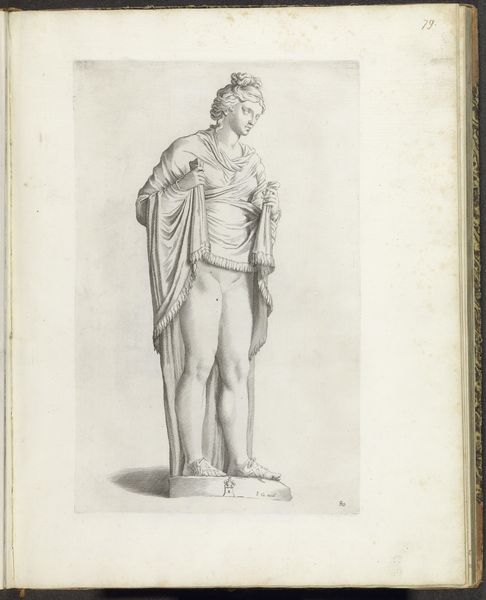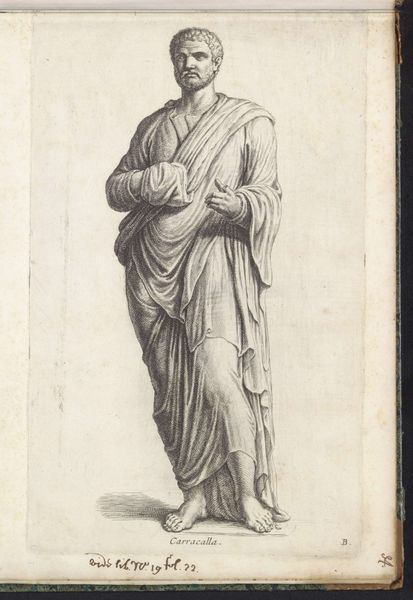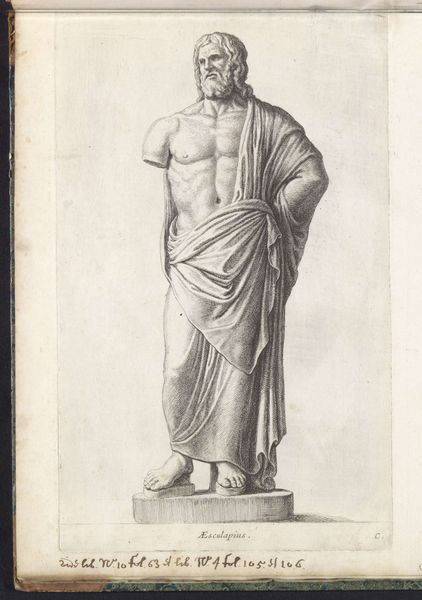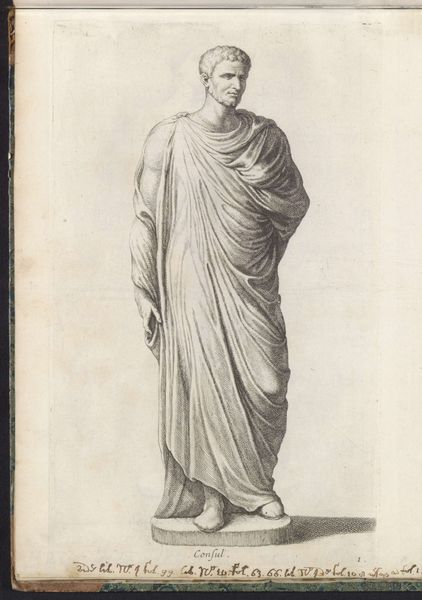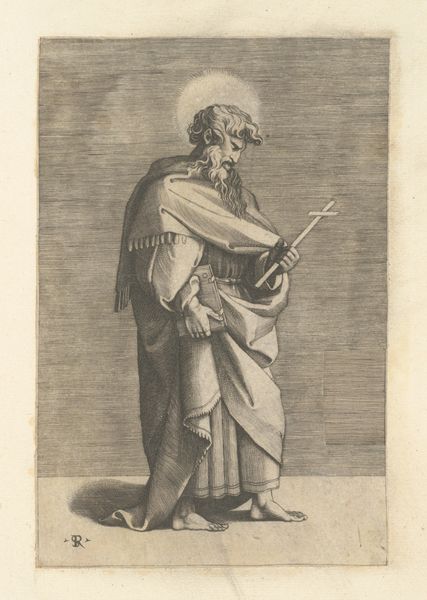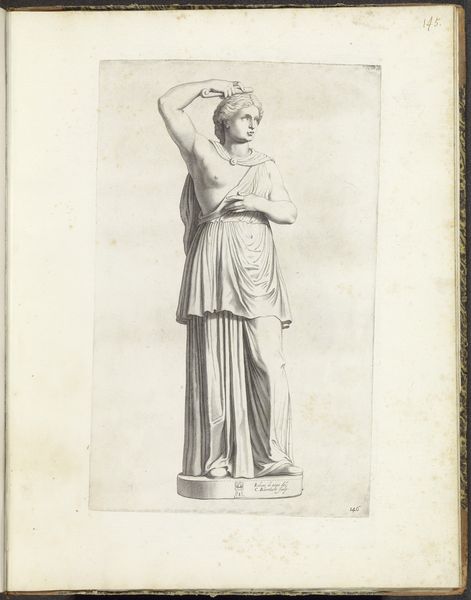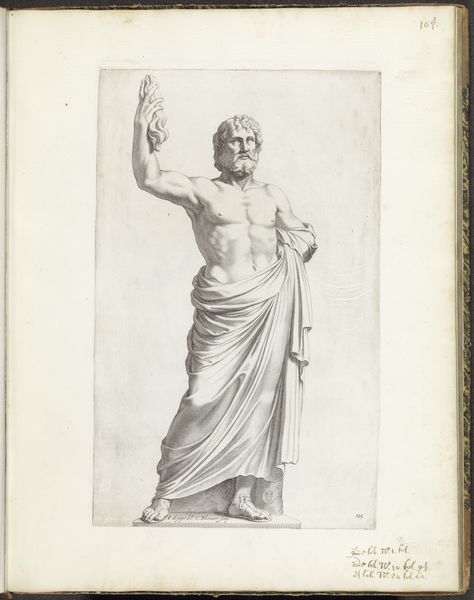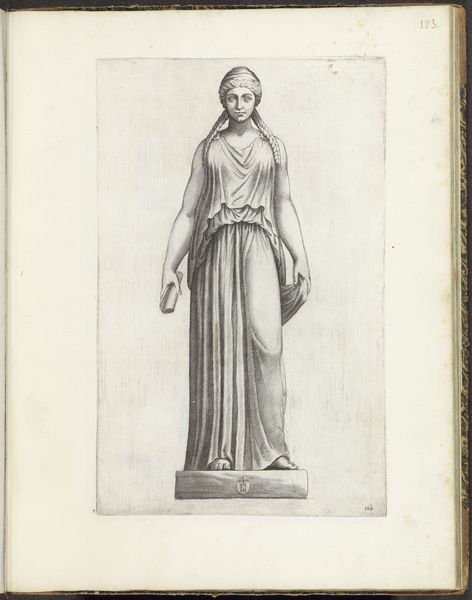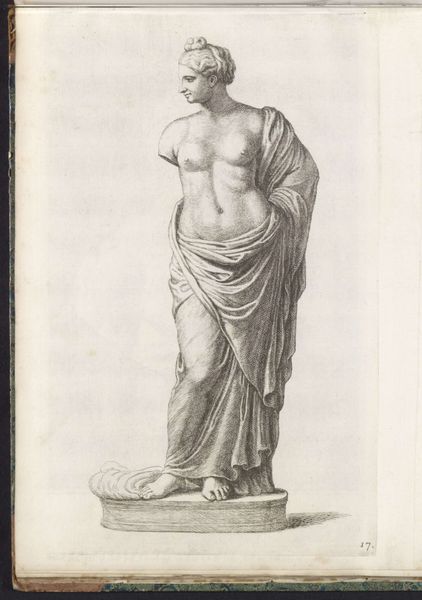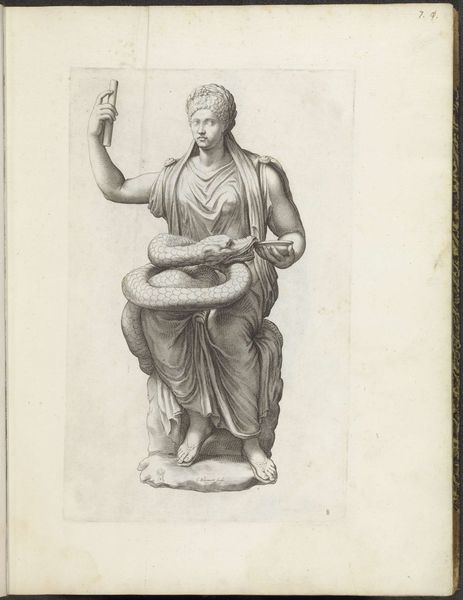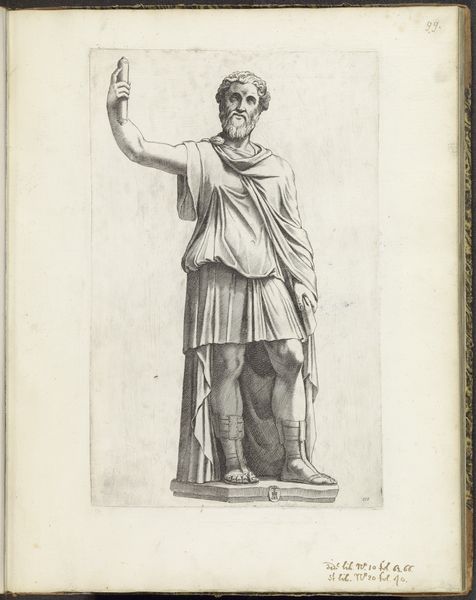
print, sculpture, engraving
#
baroque
# print
#
greek-and-roman-art
#
old engraving style
#
figuration
#
sculpture
#
history-painting
#
engraving
Dimensions: height 403 mm, width 239 mm
Copyright: Rijks Museum: Open Domain
This engraving of a statue of Aesculapius was made by Luca Ciamberlano in the early 17th century. As the Roman god of medicine and healing, Aesculapius is depicted in the classical style, draped in robes with a serpent entwined around a staff. In the context of 17th-century Europe, and the rise of scientific rationalism, the image of Aesculapius references the long history of medicine, linking ancient knowledge to contemporary practice. Art academies of the period emphasized classical forms as models of aesthetic and intellectual achievement. The engraving might reflect an emerging interest in the collection and cataloging of classical antiquities, part of a broader project of ordering and classifying the natural world. Historians can examine period texts on medicine, museum collection records, and the biographies of artists and patrons, to better understand the cultural meanings embedded in this image. By studying the historical context, we recognize that even seemingly straightforward depictions of classical figures are deeply embedded in the social and institutional histories of their own time.
Comments
No comments
Be the first to comment and join the conversation on the ultimate creative platform.
